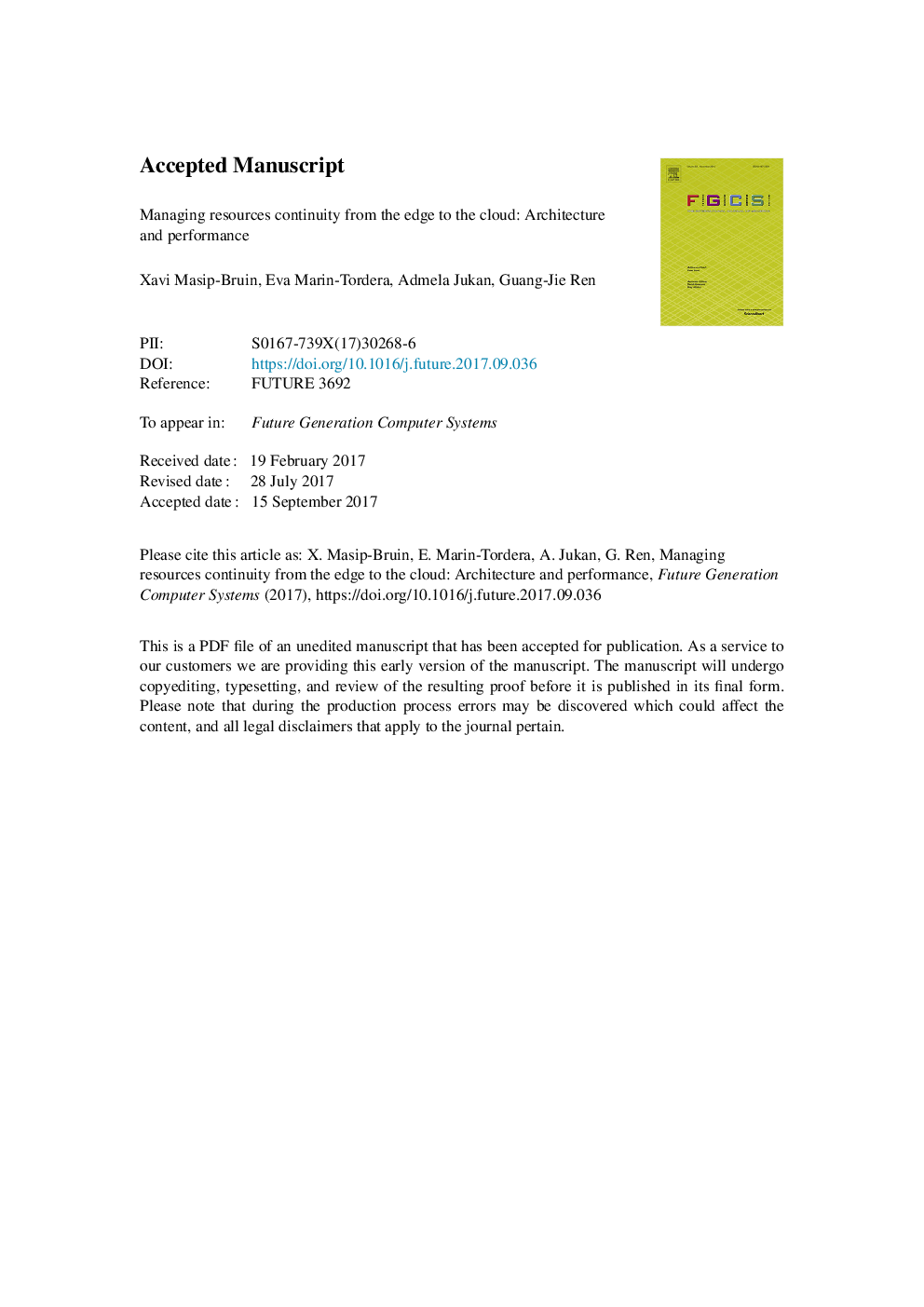ترجمه فارسی عنوان مقاله
مدیریت تداوم منابع از لبه به ابر: معماری و عملکرد
عنوان انگلیسی
Managing resources continuity from the edge to the cloud: Architecture and performance
| کد مقاله | سال انتشار | تعداد صفحات مقاله انگلیسی |
|---|---|---|
| 149753 | 2018 | 36 صفحه PDF |
منبع

Publisher : Elsevier - Science Direct (الزویر - ساینس دایرکت)
Journal : Future Generation Computer Systems, Volume 79, Part 3, February 2018, Pages 777-785
ترجمه کلمات کلیدی
پردازش ابری، محاسبات مه محاسبات لبه، مدیریت منابع، تخلیه،
کلمات کلیدی انگلیسی
Cloud computing; Fog computing; Edge computing; Resource management; Offloading;

